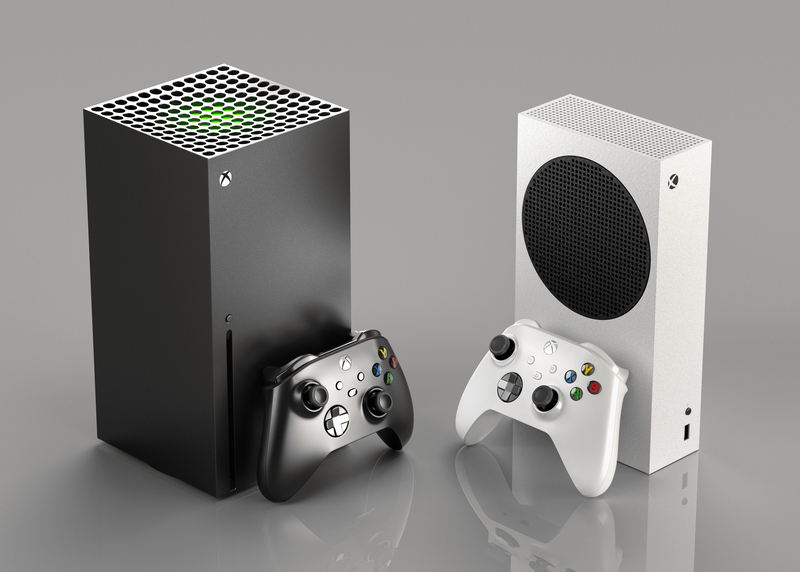Welcome to our comprehensive guide on understanding video game power consumption. Newer video game consoles consume around 200 – 300 watts of power, but can consume more or less depending on what mode it is in! There is much to learn about video game energy usage in this blog, so keep reading.
Here at The Energy Professor, we want to give you the information you need to not only save money on your energy bill but to also become more energy efficient. We hope find this post helpful! And makes it easier for you to know more about video game console wattage. Be sure to also check out our one-of-a-kind energy savings calculator!
The Energy Professor Electricity Rate Check Tool
Does Gaming Use a Lot of Electricity?

Video game consoles can use quite a bit of energy depending on what you’re playing. The latest generation of gaming consoles, such as the PlayStation 5 and Xbox Series X consume around 200-300 watts of electricity while in use. In comparison, their predecessors, the PlayStation 4 and Xbox One, are relatively more energy-efficient, consuming approximately 150-200 watts during gameplay.
How many watts does my gaming console use?
Here is a comparison of gaming console wattage:
- Xbox One – 70 – 120 watts
- Xbox X – up to 200 watts
- Playstation 4 – up to 150 watts
- Playstation 5 – 150 – 200 watts
- Nintendo Switch – Between 15 – 40 watts
Related post: Complete Guide to the Best Electricity-Saving Devices for Homes
How Many Watts Does an Xbox One Use?

The Xbox One uses between 70 – 120 watts of power per hour of usage. Many gamers have observed that newer games on the Xbox Series S and Xbox Series X tend to consume more power compared to older titles, despite the usual trend of technology advancements leading to greater energy efficiency. The heightened power consumption can likely be attributed to the increased processing power required for these intricate and visually stunning games. It’s important to note that power consumption can vary depending on the specific game being played and the console’s settings. Understanding the Xbox Series S wattage and Xbox Series X watts is essential for both optimizing your gaming experience and managing your energy consumption effectively.
How Much Electricity Does an Xbox One Use Per Hour?
- The Xbox One typically consumes approximately 0.07 to 0.12 kilowatt-hours (kWh) of electricity per hour during operation.
To determine the precise energy cost of running your Xbox One, you can easily convert the wattage to kilowatt-hours by dividing the wattage figure by 1,000. This conversion reveals that your Xbox One consumes approximately 0.07 to 0.12 kWh of electricity per hour. Understanding this metric empowers you to manage your energy consumption effectively while enjoying your gaming sessions.
How Much Does it Cost to Run an Xbox One?
- Running an Xbox One typically costs around $0.94 per month in electricity expenses.
Here’s the breakdown:
- The Xbox One operates at 120 watts per hour, which translates to 0.12 kilowatts (kW) per hour.
- If the Xbox One is in use for 2 hours each day, the daily energy usage amounts to 0.12 kW x 2 hours = 0.24 kilowatt-hours (kWh).
- Expanding this to a monthly perspective, the daily energy usage multiplied by the number of days in a month (typically 30) results in a monthly consumption of 0.24 kWh x 30 = 7.2 kWh.
- Lastly, to calculate the monthly cost, we multiply the monthly energy consumption by the cost of electricity per kilowatt-hour, which is typically around $0.13. This leads to a monthly cost of 7.2 kWh x $0.13/kWh = approximately $0.94 per month.
Understanding the cost of running your Xbox One not only helps you manage your gaming expenses but also contributes to more informed energy consumption choices.
How many watts do the Xbox Series X and the Xbox Series S use?
- The power consumption of the Xbox Series X typically ranges between 25 to 100 watts, while the Xbox Series S requires approximately 45 to 220 watts.
Related Post: How Much Energy Does Gaming Computers Use?
How Much Power Does a PS5 and PS4 Use?

The Playstation 4 uses between around 100 – 150 watts, while the Playstation 5 uses between 150 – 200 watts. Sony entered the video game market with the release of the first Playstation Classic in 1994, which consumed only 2.3 to 2.5 watts of energy. Since then, Sony has released the PS2, PS3, and PS4, as well as their Slim and Pro variations, with the most recent addition being the PS5. As video games become more complex, with clearer and more realistic graphics, smoother motion, and physics, they require more power to run. However, this means that the Playstation consoles have become less energy-efficient over time. But does the PS4 use a lot of electricity? Let’s take a look at the PS4 power wattage to compare.
How Much Electricity Does a PS5 Use?
- The PS5’s wattage can reach up to 220 watts, marking a notable increase compared to the average power consumption of its predecessor, the PS4.
The PS5, known for its high-performance capabilities, exhibits a power consumption range of approximately 50 to 220 watts, depending on its current usage. The power demand can vary significantly based on whether you’re engaged in streaming services, which typically consume less energy, or playing more resource-intensive games. Furthermore, the PS5’s flexibility allows it to adapt to the energy needs of future, graphically complex games.
How Much Electricity Does a PS5 Use Per Month?
- The precise amount can vary, but in our example below, playing The Witcher 3 on the PS5 for 2 hours a day costs approximately $3 per month or around $37 annually.
As mentioned earlier, the power consumption of a PS5 can fluctuate, ranging from 50 to 220 watts depending on the intensity of the game being played. To provide a practical example, let’s assume you’re engrossed in a visually demanding title like The Witcher 3 for an hour, with the PS5 utilizing 200 watts of power during active gameplay.
Now, if your current electricity rate stands at $0.13 per kilowatt-hour (kWh), and you engage in two hours of The Witcher 3 gameplay daily, here’s how you calculate your daily energy usage:
- 200 watts x 2 hours = 400 watt-hours (Wh) or 0.4 kilowatt-hours (kWh)
- 0.4 kWh x $0.13 per kWh = approximately $0.052 per day
So, dedicating two hours of daily playtime to The Witcher 3 on your PS5 would contribute approximately $0.052 to your daily energy bill, factoring in the rate of $0.13 per kWh. Over a month, this translates to an estimated monthly cost of around $3 or an annual expenditure of about $37. Understanding the energy implications of your gaming habits empowers you to make informed decisions regarding your electricity usage and expenses.
How Many Watts Does a PS4 Use?
- The PlayStation 4 (PS4) exhibits a broad range of power usage, typically falling between 10 and 150 watts.
The PS4’s wattage can fluctuate significantly, depending largely on the demands of the game you’re playing. In standby mode, the PS4 consumes a minimal 10 watts of power. However, when fully engaged in gameplay, power usage can surge to as high as 150 watts.
Related Article: How to Lower Your Electricity Bill
How Much Power Does a Nintendo Switch Use?

The Nintendo Switch stands out as the most energy-efficient gaming console, with power consumption rarely exceeding 40 watts during gameplay. To estimate its monthly electricity cost, we can do the same formula as earlier. As mentioned, the Nintendo Switch typically consumes a mere 10-18 watts per hour while in operation. Now, let’s consider a scenario where you indulge in two hours of gameplay, specifically with a title like Animal Crossing: New Horizons. What’s the associated cost?
At 18 watts per hour:
- 18 watts × 2 hours = 36 watt-hours per day
- 36 watt-hours ÷ 1000 = 0.036 kilowatt-hours (kWh) per day
Assuming you engage in this daily gaming routine for an entire month:
- 0.036 kWh × 30 days = 1.08 kWh per month
Factoring in an average electricity rate of $0.26 per kWh, the total cost amounts to:
- 1.08 kWh × $0.26/kWh = $0.28 per month
Therefore, dedicating two hours of daily playtime to Animal Crossing: New Horizons on the Nintendo Switch would incur an electricity cost of merely $0.28 per month. This exemplifies the console’s energy-efficient performance, allowing gamers to enjoy their favorite titles without causing a significant impact on their monthly expenses
Related Post: What’s the Difference Between Sleep and Hibernate Mode?
What Do Video Game Consoles Use Power For?

- Standby Mode
- Internet Access
- Streaming Services
- Blu-ray/DVD Capability
- Live Chat/Streaming
The amount of power a gaming console uses is highly dependent on what it is being used for. This includes the specific game being played as well as other factors such as graphics and console models. For instance, simpler games like Animal Crossing: New Horizons typically use less power than more complex games like Skyrim due to the difference in graphics and processing power required. Additionally, each gaming console has its range of power usage.
Comparing the wattage of a PS4 and a Nintendo Switch will result in vastly different power usage results due to the inherent differences in the consoles. Today’s gaming consoles are capable of much more than their predecessors, such as the Nintendo 64, as game developers continue to push the boundaries of graphics, physics, and interactivity.
Related Article: How to Find Out Who Your Energy Supplier Is
How Much Does it Cost to Run a Video Game Console FAQ?

Q: How much watts does a game console use?
A: On average, a video game console will use around 90 watts when it is being actively used for gaming, and 1-2 watts when the console is off but still plugged in.
Q: How many watts does a PS5 use?
A: The PS5 Wattage typically ranges between 50 and 220 watts. This variation is influenced by how the console is actively being used, with streaming services generally consuming less power than running newer, more demanding games. It’s important to note that power consumption may also fluctuate as more complex games are developed in the future.
Q: How much electricity does an Xbox One use per hour?
A: Typically, watts or kilowatts are measured by the hour. The Xbox One utilizes between 70 to 120 watts per running hour. Your energy bill will likely use kilowatt-hours (kWh) to calculate your total energy cost. Therefore, the Xbox One’s power consumption translates to approximately 0.07 to 0.12 kWh (kilowatt-hours) per hour.
Q: How many watts does it take to run a PS4?
A: The PS4 exhibits a broad range of power usage, depending largely on the intensity of the game being played. While in standby mode, it consumes as little as 10 watts. During active gameplay, however, power usage can peak at around 150 watts. If you’re curious about the kilowatt-hour (kWh) consumption of a PS4, you can calculate it by dividing the wattage by 1000, resulting in a range of 0.01 to 0.15 kWh (kilowatt-hours) for the PS4.
Do you Need Cheaper Electricity?
If you’ve taken the time to understand the information on your bill and discovered you’re paying more than you’d like for your electricity, have you looked around for a cheaper deal? The Energy Professor has a wealth of information on ways to save on your utilities, including details of top deals that could significantly reduce your monthly or quarterly electricity bills.
We hope you found this article helpful! If you are looking for ways to increase energy efficiency and sustainability in your home be sure to take a look at all of the latest renewable energy options in your area. The Energy Professor helps residential and small business owners find qualified energy suppliers in New York, New Jersey, Pennsylvania, Texas, Ohio, Maryland, Illinois, and Massachusetts


